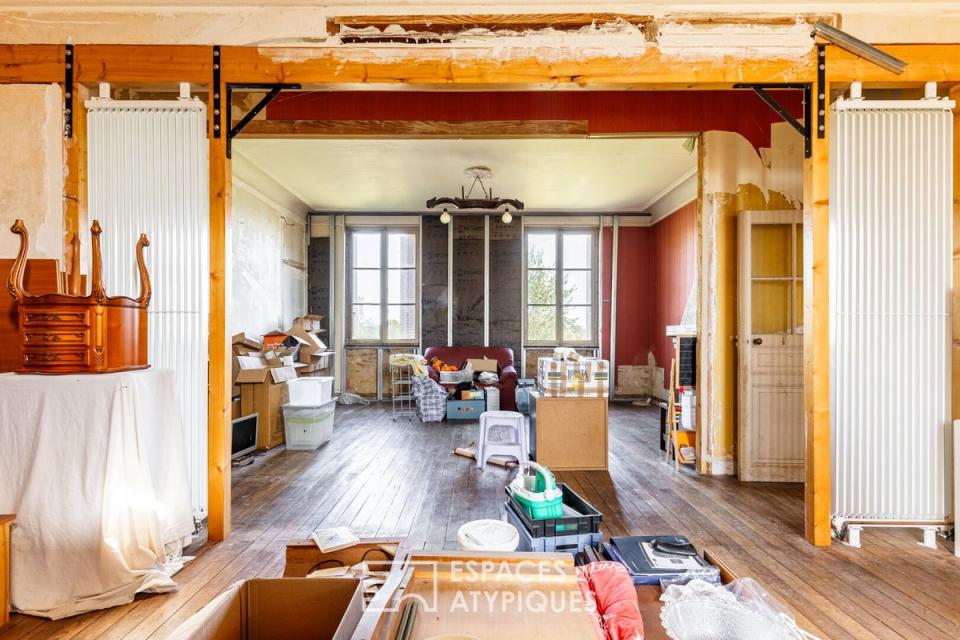A dream restoration project: Art Deco-style former station building in France for sale for £212,500

Charming Art Deco architecture? Check. Faded grandeur? Check. Rich and unusual history? Check. Tantalising potential? Check.
This former station in France is the stuff that dream renovation projects are made of.
Located in Varzay, between Saintes and Royan in southwestern France, the “historic gem” is listed for sale for £212,504 (€245,000) with Espaces Atypiques.
The three-storey, Art Deco-style building was constructed in 1912 and designed by the architect Pierre-Joseph Esquié, who created some of Toulouse’s most iconic buildings.

It is one of six “twin stations” designed by Esquié, along with Asnières-la-Giraud, Douhet-Écoyeux, Pisany, Saint-Hilaire-Brizambourg and Saint-Romain-de-Benet.
Only one of the six stations, Saint-Hilaire-Brizambourg, remains in service today.
Today, the front of the building still reads VARZAY in green tiled letters, while the back holds the name of the early state-owned railway company: CHEMINS DE FER DE L’ ÉTAT.
As well as its distressed pink walls —full of faded French charm, of course— the building is striking for its arched windows and door frames, each decorated with white, red and green glazed bricks.

Inside, more of the station’s original features have been preserved. The ground floor, for example, is a grand, high-ceilinged room with its black and white tiled floors and fireplace still intact.
Measuring a huge 1,184 sq ft, it contains the former station hall, luggage room and railway workers’ room.
On the first floor is the former station master's apartment: another large space with wooden floorboards, more of those impressive high ceilings and big windows bringing in natural light.
Like the ground floor, it is yet to be renovated, says Espaces Atypiques.

Upstairs, though, the top floor —which would originally have been used for drying tobacco leaves— has been converted into an apartment with a kitchen, living area, bedroom and bathroom.
The upper floors are accessed via a winding wooden staircase, while there is also a “magnificent” vaulted cellar below.
In total, the three-bedroom house covers 3,014 sq ft with half a hectare of land.
After removing the Saujon to Saint-Jean d'Angély train line, French train company SNCF sold the property in the late 1990s to another private buyer. It was listed as a Historic Monument in 2002.
The station’s current owner, Élisabeth Papegay, bought the property in 2006, according to local press.
At the time, it had been occupied by squatters for three years and was in bad condition.

Papegay spent two years “camping” in the former station manager’s apartment, before moving upstairs.
She had dreamed of converting the former station hall into a tearoom, although, due to personal reasons, never went through with the idea.
Papegay has been trying to sell the property since the end of 2022, initially listing it for the same price with a local agency.
“This place has a soul,” she told Sud Ouest. “I would like someone who has a crush [to take over], like I had sixteen years ago.”
Yet besides passion, the buyer will also require a healthy budget for the renovation, given the scale of the work needed.
The property is being marketed as an “old station to reinvent”, and, according to the agents, would suit “lovers of railway history, artists, people with tourist accommodation projects, or atypical people looking for a different house.”

 Yahoo News
Yahoo News 
